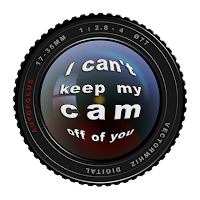Good question if I say so myself. Much of the art I encounter on the web today, kind of makes me go [
insert long lasting flatulent dissonance]. This goes for digital art in particular. Not that I believe that I am one of the few to make proper art and most artists don't, but I just find myself being unable to pass appreciation for 'artwork' that obviously required very little inspiration, skill and commitment to create. However, somehow this type of one-horse, amateurish fiddling seems to have become some sort of standard that has gained a huge following. Portfolio sites are teeming with such rubbish and the views and likes of them suggests that the average person is quite fond of crappy tinkering. The public of course likes to be told what they should appreciate, which probably is why the
circus of unaware and cheap rubble works just fine.
Most artists promptly give up creating true art, because it saves them time and effort. Boggling unskilled junk is so much easier than sweating ones balls of (pardon my French) to create something really inspired and meaningful. A consequence of such mindless conduct is that vast armies of incompetent bunglers all of a sudden are able to pretend to be artists. The sad thing is that the public actually believes that this is the case and as a result shiploads of worthless bunk is sold.
Here you see a shameless example of modern ignorance.
I fear this deplorable situation isn't going to change any time soon, which is a shame in particular for artists that remain true to themselves, true to art. It is a sign of the times; impostors rule and the genuine are scorned and starve. There is of course a reason for things to develop into such a suspicious direction. For instance: Vincent van Gogh sold only one painting during his entire life, earning close to nothing from it, but today the
art trade criminals make millions from selling his works. His art has become an investment rather than an inspired creation that one cannot stop enjoying by looking at it. The rich often buy and sell art for this reason. But art is more emotion than reason.
In Van Gogh's work an obvious style is visible like many other great artists that created art that is immediately recognizable as work painted or sculpted by them. This is the visual signature that reflects the personality of artists. Their brush strokes, palette and preference for certain styles, scenes and subjects refer to them; it is a complex combination of aspects that tell the trained observer which artist made which artwork. But such intriguing intricacy is often absent in the smelly garbage heap of today's art.
I have not studied art or art history, but I immediately recognize certain types of art. Art in which shapes are built and arranged based on the lines of the
golden mean, symbolism, hidden symmetry and other subtle visual denotations to (mostly ancient) knowledge, features that many observers fail to detect. It makes the experience of enjoying art more profound and powerful, because the occult aspects were brought to consciousness. It is exactly what I notice to be absent in much of modern art. Albert Camus expressed this in an exact and eloquent way:
'... a product of the untalented, sold by the unprincipled to the utterly bewildered'. In this case he spoke about abstract art, but his words apply to all sorts of useless modern rubble.
 |
Greatest inventor of all time:
Nikola Tesla |
The crux of the above is that true art often contains meta-data; information that is present, but not always easily detectable. This unobvious type of information is present in a kind of concealed way in analog art; painting and sculptures - the traditional art forms. In digital artwork it is even more difficult if not impossible to detect, but that does not automatically mean it is absent. I often assign values to drawing functions, values related to the numbers
Nikola Tesla preferred (numbers divisible by 3 often) or numbers from the
vortex based mathematics that were re-discovered by
Marko Rodin. These aspects are too deeply hidden to be detected with the naked eye. It resembles the concealing of code in certain parts of the bible, particularly the version written in Hebrew letters. It requires advance decoding to detect, but the coding is there nevertheless. In such works the unapparent can repulse the obvious.
 |
| Marko Rodin |
So, what is the use of such occult data in art? In certain scientific circles it has been established that humans see much more than they become aware of.
A part of the information that the eyes detect never becomes part of awareness. It is observed and after a while sinks into the unconsciousness where it is stored in the deep dungeons of memory, which is often incorrectly referred to as being forgotten. Therefore there is no apparent use for it, but what is apparent or not can also mean the opposite when digging deeper into the way that the human mind works. In today's science it is unsafe to speak or write about consciousness, especially when it is claimed to be an entity that exists outside of the brain. But I am sure this view will change at some point in time. Perhaps that instant will be incited by an art loving scholar enjoying the splendor of a true work of art. That would confirm the significance of inspired creativity and a mind that is open to the unknown. A collaboration of features that has been disregarded too often for too long by too many.
Hasta luego online virtual folks.















